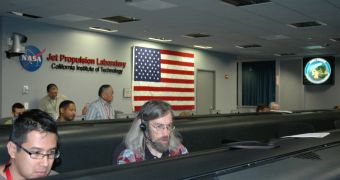Mission planers at the NASA Jet Propulsion Laboratory (JPL) announce that the EPOXI mission is currently on track to flying by Comet Hartley 2 in a few days, after successfully completing a course correction maneuver.
This is one of the final such maneuvers that the former Deep Impact space probe will carry out before it catches up with Hartley 2 on November 4. The spacecraft has already studied the comet 9P/Temple.
At this point, JPL experts expect that the mission will pass closest to the comet at around 7:02 am PDT (10:02 am EDT) in early November. Hartley 2 passed closest to Earth on October 20, and it now heading for the Sun.
After it slingshots around the star, the comet will head back out into the solar system, towards the Kuiper Belt. The space body is a medium-sized comet, and his trajectory poses no danger to Earth.
The latest EPOXI course correction maneuver took place on Wednesday, October 17, when its engines were ignited for about 60 seconds. The spacecraft's velocity was changed by 1.59 meters per second (3.6 miles per hour).
When the former Deep Impact spacecraft will reach the comet, it will pass some 700 kilometers (435 miles) above its surface, which is very close given the powerful instruments on EPOXI.
Its photo cameras might even be able to snap images of the cometary nucleus, arguably the most important part of any comet. The fact that Harley 2 stumbled in this spacecraft's path was a lucky shot.
The mission was extended in mid-flight, after already visiting 9P/Temple. Its name comes from two extended mission components.
The first is the extrasolar planet observations, called Extrasolar Planet Observations and Characterization (EPOCh); and the second is the current flyby, called the Deep Impact Extended Investigation (DIXI).
In addition to EPOXI, a large number of space- and ground-based telescopes are trained on Hartley 2 as well, including the Hubble and the Wide-fields Infrared Survey Explorer (WISE) telescopes.
Astronomers hope that these studies will make it easier for them to understand the role the comets played early on in the development of the solar system.
Recent theories show that Earth's oceans may have come from outer space, aboard comets. Under such circumstances, learning more about these space bodies could mean learning more about the origins of life.

 14 DAY TRIAL //
14 DAY TRIAL //